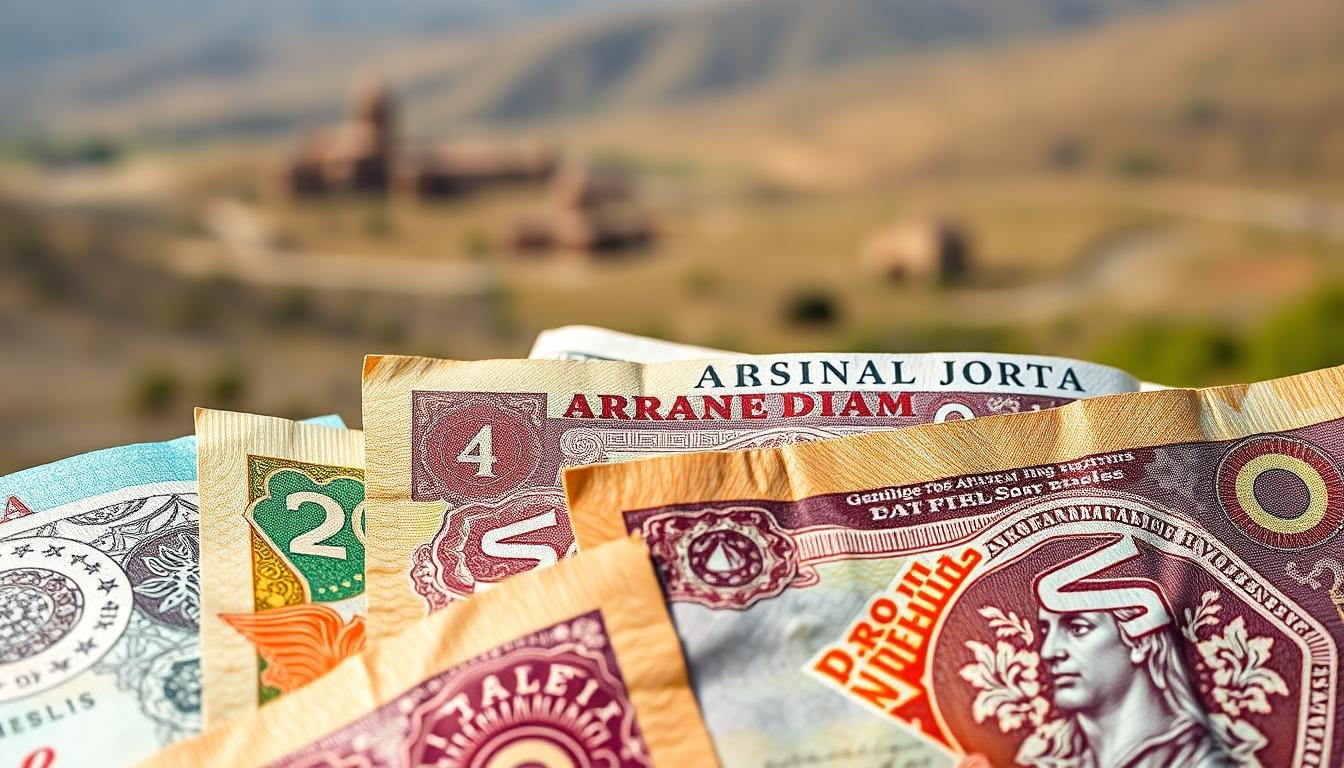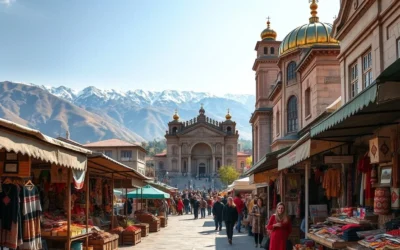✓ Accommodations✓ Flights✓ Rental Cars✓ Tours & Activities
Did you know that over 90% of transactions in this country still rely on cash? Understanding the local currency and payment options is crucial for a smooth trip. The official currency here is the Armenian Dram (AMD), and knowing how to use it can save you time and money.
Before your trip, it’s wise to familiarize yourself with the denominations of AMD banknotes and coins. This will help you navigate markets, restaurants, and transportation with ease. While credit cards are widely accepted in cities, cash is often preferred in smaller towns and rural areas.
This guide will walk you through the best ways to manage your money, from using ATMs to avoiding high exchange fees. You’ll also learn about travel cards like the Wise Multi-Currency Card, which offers low fees and competitive rates. Stay tuned for practical tips to make your journey hassle-free!
Understanding Armenia’s Currency: The Armenian Dram
When visiting, you’ll need to familiarize yourself with the Armenian Dram (AMD). This is the only legal tender used in the country. Issued by the Central Bank, the Dram comes in both coins and banknotes, making it easy to handle everyday transactions.
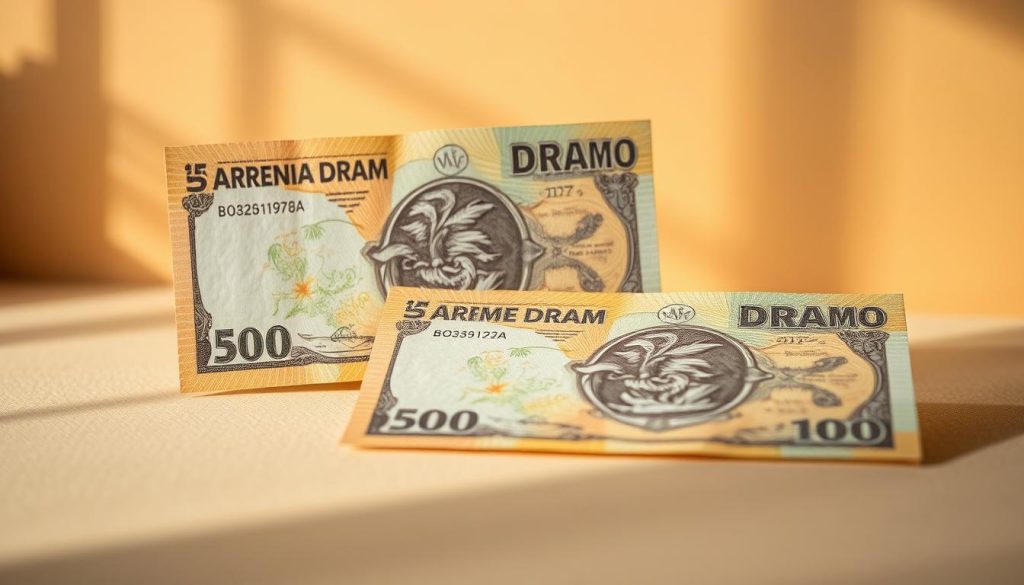
Currency Denominations and Features
The Dram is divided into 100 Luma, though coins are more commonly used. Banknotes range from 1,000 to 100,000 AMD, while coins include 10, 20, 50, 100, 200, and 500 AMD. Knowing these denominations will help you navigate markets, taxis, and restaurants with ease.
Look for the currency symbol (֏) and the ISO code (AMD) on bills and receipts. This ensures you’re using the correct currency. For example, a 1,000 AMD note can buy you a coffee, while 5,000 AMD covers a meal at a local restaurant.
Where to Exchange Your Money
Exchanging your money at the right place can save you time and fees. Avoid airport exchange bureaus, as they often offer less favorable rates. Instead, head to reputable banks or city-center exchange offices for better deals.
Here are some tips to keep in mind:
- Always compare rates before exchanging.
- Ensure you’re charged in AMD to avoid dynamic currency conversion fees.
- Carry smaller denominations for everyday purchases.
By following these tips, you’ll make the most of your trip and avoid unnecessary expenses.
Using Travel Cards and Other Payment Methods in Armenia
Traveling smart means choosing the right payment methods to save time and money. Modern options like multi-currency travel cards offer convenience and cost-effectiveness. These cards allow you to manage your funds seamlessly, whether you’re exploring a bustling city or a quiet market.
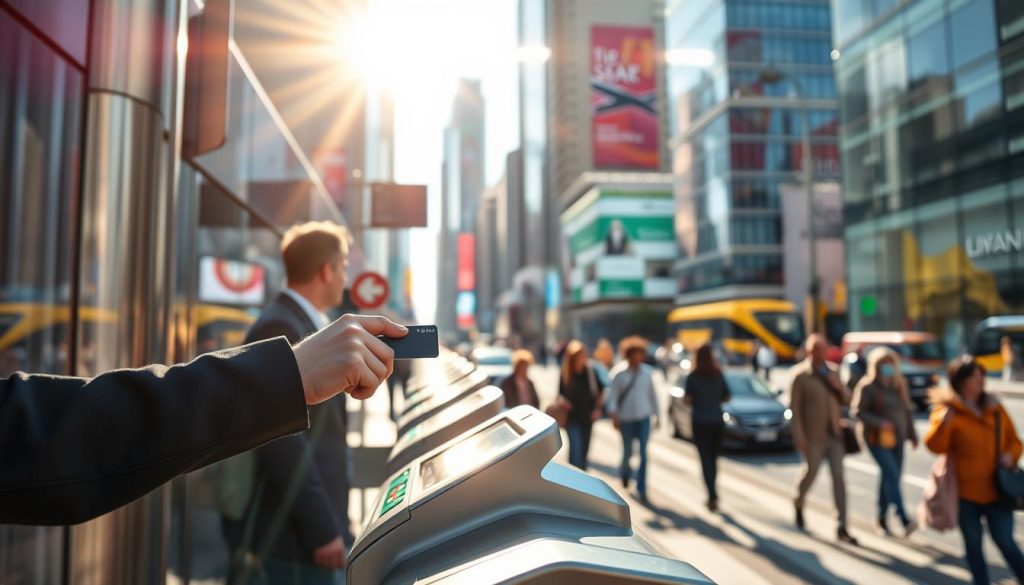
Benefits of a Multi-Currency Travel Card
Multi-currency travel cards, such as the Wise Multi-Currency Card, are a game-changer for travelers. They let you hold and exchange different currencies at competitive rates. This means you avoid high conversion fees and get the best value for your money.
Here’s why these cards stand out:
- Low fees for currency exchanges and ATM withdrawals.
- Ability to switch between currencies with just a few taps on an app.
- Enhanced security features to protect your funds.
Using a travel card ensures you’re always prepared, whether you’re paying for a taxi or dining at a local restaurant.
How to Avoid Foreign Transaction Fees
Foreign transaction fees can add up quickly, but there are ways to avoid them. First, choose a card that offers no foreign transaction fees. Pre-loading your card with the local currency in advance can also help you lock in a favorable exchange rate.
Here are some practical tips:
- Compare exchange rates before loading your card.
- Use ATMs in well-lit, secure locations to minimize risks.
- Check your card provider’s website or app for live rate updates.
By following these steps, you’ll make the most of your trip and keep your expenses in check.
Armenia: Ultimate Travelers Guide to Currencies & Payments
Getting the best value for your money starts with knowing real-world exchange rates. These rates determine how much local currency you’ll receive for your dollars. Understanding them can help you budget smarter and avoid unnecessary fees.
Real-World Exchange Rates
Real-world exchange rates, also known as mid-market rates, are the live rates banks use to trade currencies. They’re the fairest benchmark for converting your money. When exchanging currency, banks and exchange offices often add a markup, so comparing rates is key.
Use online tools or currency conversion websites to monitor live USD/AMD rates. Apps like XE or Wise provide real-time updates, helping you decide the best time to exchange. Locking in a favorable rate before your trip can save you money.
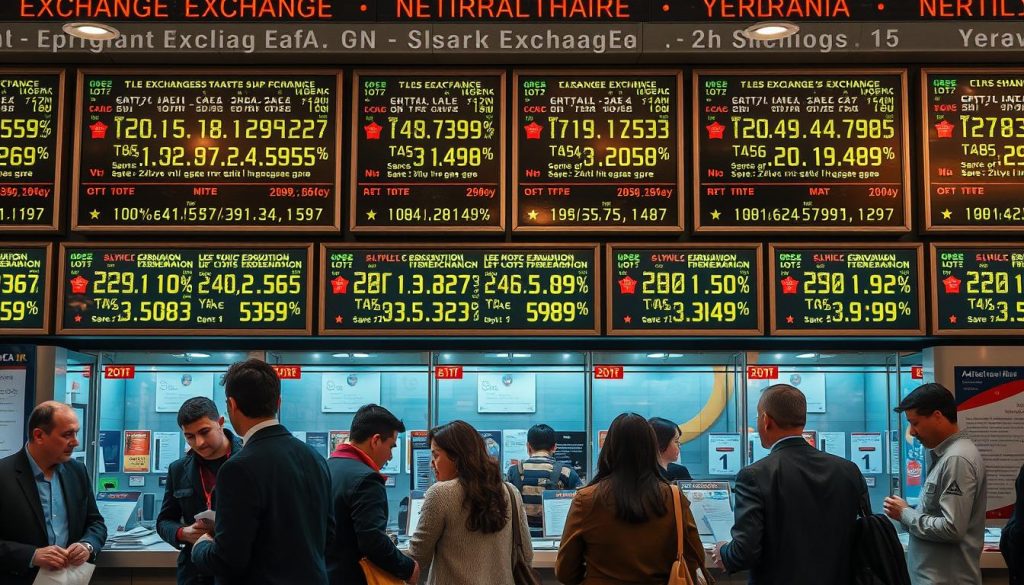
Planning Your Currency Budget
Planning your budget starts with estimating daily expenses. For example, a meal in a local restaurant costs around 5,000 AMD, while a taxi ride might be 1,000 AMD. Carrying a mix of cash and a travel card ensures you’re prepared for any situation.
Here are some tips to plan your budget effectively:
- Compare rates from banks, ATMs, and exchange offices to get the best deal.
- Set aside extra funds for unexpected expenses or rate fluctuations.
- Use a multi-currency card to avoid dynamic currency conversion fees.
By staying informed and planning ahead, you’ll make the most of your money and enjoy a stress-free trip.
Tips for Safe and Cost-Effective Currency Exchange
Exchanging currency safely is a key part of any trip. Knowing where and how to get the best rates can save you money and stress. Avoid high fees and hidden charges by following these practical tips.
Best Practices at ATMs and Exchange Bureaus
When exchanging money, avoid captive points like airports and hotels. These locations often charge higher fees and offer less favorable rates. Instead, use local banks or reputable ATMs for better deals.
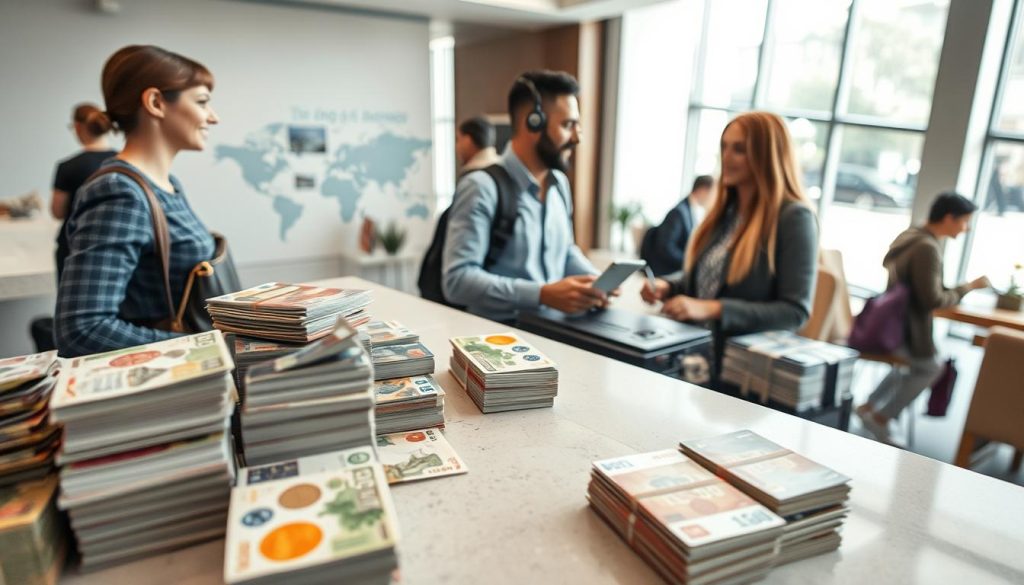
- Compare rates: Check multiple banks or exchange offices to find the best deal.
- Use ATMs wisely: Choose machines in secure, well-lit areas to minimize risks.
- Verify fees: Always ask about service charges or hidden costs before completing a transaction.
Another smart way to save is by using a multi-currency card. These cards let you lock in favorable rates and avoid dynamic currency conversion fees. Apps like Wise or XE can help you monitor live rates and plan your exchanges in advance.
Finally, carry smaller denominations of the local currency for everyday expenses. This ensures you’re prepared for taxis, markets, and small purchases without overpaying. By following these steps, you’ll make your trip smoother and more cost-effective.
Navigating Payment Options for Different Spending Situations
Choosing the right payment method can make or break your travel experience. Whether you’re dining out, shopping, or exploring local markets, knowing when to use cash or a card is essential. Flexibility in your payment options ensures you’re prepared for any situation.
Paying in Cash vs. Card
In cities, cards are widely accepted, making them convenient for larger purchases. However, smaller towns and rural areas often prefer cash. For example, local markets and taxis may only accept the Armenian Dram. Carrying smaller denominations of cash ensures you’re ready for these situations.
Here’s a quick comparison:
- Cash: Ideal for small purchases, tips, and rural areas.
- Card: Best for hotels, restaurants, and larger expenses.
Handling Emergencies with Multiple Payment Methods
Emergencies can happen, and having multiple payment options is crucial. A mix of cash and a travel card ensures you’re covered. For instance, if an ATM is unavailable, having cash on hand can save the day. Similarly, a card with low foreign transaction fees can prevent unnecessary costs.
Here are some tips to stay prepared:
- Carry a small amount of cash for immediate needs.
- Use a multi-currency card for flexibility and security.
- Notify your bank about your travel dates to avoid card issues.
By staying flexible and prepared, you can enjoy a stress-free travel experience.
Traveling Smart: Currency Exchange and Money Management Apps
Stay ahead of exchange rates and manage your budget effortlessly with digital tools. Modern apps and online platforms make it easy to track your spending and convert currency in real time. Whether you’re planning your trip or already on the road, these tools can save you time and money.
Monitoring Live USD/AMD Rates
Keeping an eye on live exchange rates helps you make smarter decisions when converting your money. Apps like Wise and XE provide real-time updates, so you’ll always know the best time to exchange. For example, if the USD/AMD rate is favorable, you can lock it in before it changes.
Setting up alerts is another great way to stay informed. These notifications let you know when rates hit your desired level. This ensures you get the most value for your currency without constantly checking.
Using Currency Conversion Tools
Currency conversion tools are essential for travelers. They let you calculate costs instantly, whether you’re shopping, dining, or paying for transportation. For instance, if a meal costs 5,000 AMD, you can quickly see how much that is in your home currency.
Here’s how these tools can help:
- Budget tracking: Monitor your daily spending to avoid overspending.
- Low fees: Apps like Wise offer competitive rates with minimal charges.
- Convenience: Access your card balance and transaction history on the go.
By integrating these tools into your travel routine, you’ll enjoy a smoother and more cost-effective trip. Whether you’re withdrawing cash from an ATM or paying with a card, these apps ensure you’re always in control of your finances.
Additional Insights: Banks, Fees, and Local Payment Etiquette
Managing your finances abroad requires understanding local banking and payment customs. From avoiding hidden fees to navigating tipping practices, a little knowledge goes a long way. Let’s dive into the essentials to help you make the most of your money while traveling.
Understanding Bank Fees Abroad
Using your card internationally can come with unexpected costs. Foreign transaction fees, ATM withdrawal charges, and currency conversion markups can add up quickly. Here’s how to minimize these expenses:
- Choose the right card: Opt for one with no foreign transaction fees, like the Wise Multi-Currency Card.
- Compare ATM fees: Some banks charge higher fees for international withdrawals. Use ATMs affiliated with major banks to avoid extra costs.
- Monitor exchange rates: Apps like XE or Wise can help you track live rates and plan withdrawals when rates are favorable.
Tipping and Payment Customs
While tipping isn’t mandatory, it’s appreciated in many situations. Here’s what you need to know:
- Restaurants: A tip of 10-15% is customary for good service. Some places may include a service charge, so check your bill first.
- Taxis: Round up the fare or leave a small tip as a gesture of appreciation.
- Hotels: Tipping housekeeping staff or bellhops is a polite way to show gratitude.
Understanding these customs ensures you’re respectful and prepared in any situation. Whether you’re dining out or taking a taxi, a little cultural awareness goes a long way.
Conclusion
Planning your finances before a travel ensures a smooth and stress-free experience. Understanding the local currency and having the right payment methods can make all the difference. Whether you’re using a multi-currency card or withdrawing cash from an ATM, preparation is key.
Monitoring exchange rates and diversifying your money options helps you stay flexible. Always carry smaller denominations for convenience and safety. By following these tips, you’ll maximize your budget and enjoy your journey without financial worries.
Careful planning today ensures a hassle-free experience tomorrow. Use the tools and insights shared here to make the most of your travel adventure.
The above is subject to change.
Check back often to TRAVEL.COM for the latest travel tips and deals.
